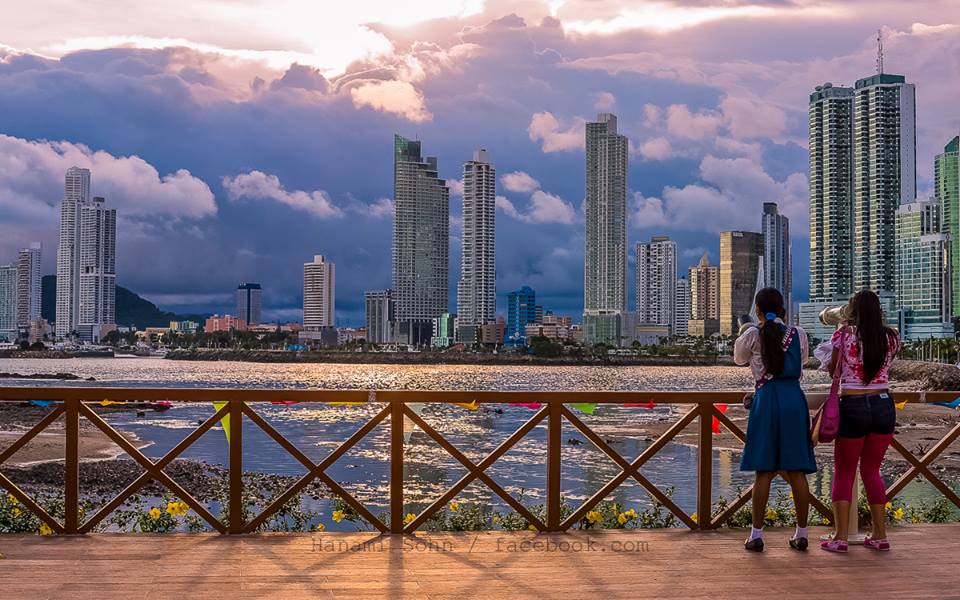Panama has long been blighted by misconceptions. When most people think of Panama, they think of the canal, hats, cigars and ‘Prison Break’. For that reason, Panama has largely remained beneath the investor radar, during which time it has actually achieved China-like growth consistently year-on-year over the past decade.
The Telegraph have highlighted Panama as being one of the world’s 20 best places to invest in property and so it would appear that the tiny Central American country’s secret is out although to seasoned investors, this will not come as a surprise.
Panama sticks out like a sore thumb from its Central American neighbours, drawing comparisons with China due to its annual 8.5% GDP growth over the last decade. Inflation is steady at a moderate rate of 4%, largely because Panama uses the US dollar as its currency, meaning the government can’t print money.
Panama is clearly most well-known for its canal which provides easy passage for container ships between the Pacific and Atlantic oceans and contributes significantly to the country’s GDP. The importance of the canal will be greater when a $5.2bn expansion project is completed and the waterway’s capacity is vastly increased.
The Panama Canal has been very successfully leveraged to transform the country into a regional financial and corporate hub and a magnet for foreign investment. Panama has 92 local and international banks with a combined $78.3bn of assets as of July 2013.
More than 100 multinationals use the capital, Panama City as their regional headquarters for Latin America including blue-chips such as Japan’s Isuzu Motors, Dutch electronics giant Koninklijke Philips, Swedish telecommunications equipment maker Ericsson and US insurer Ace Group.

Panama has diversified well beyond trade and finance and into tourism, with 1.68m foreign holidaymakers in the first nine months of 2013, fast closing in on Costa Rica, the long-time ecotourism superstar which had 1.85m foreign investors over the same period. Idyllic beaches, lush tropical landscape and the cosmopolitan sophistication of Panama City attract increasing numbers of tourists each year, boosting the country’s economy.
Significant investment into infrastructure adds buoyancy to Panama’s economy with the government spending around $15bn on public works programs to develop and upgrade airports, highways, ports, schools and hospitals. The extent of government commitment to infrastructure provides additional incentive to foreign investors, attracted by the underlying security of well-developed and sustainable services and facilities that create valuable investment opportunities.
Foreign Direct Investment (FDI) has increased significantly in Panama, amounting to a record $4bn in 2013, $980m more than in 2012 according to the Ministry of Economy and Finance (MEF).
Frank de Lima, chief of the MEF said: “The volume of investment in private sector projects is estimated at $7.65bn between 2010 and 2018. It includes $4bn from mining, about $2.2bn in works to provide energy, $650m in new hotels and $500m at the Port of Corozal.” Canada’s First Quantum Minerals is also investing $6.4bn to develop one of the largest new copper mines in the world.
Foreign investors have not been able to get enough of Panama with FDI contributing a remarkable 9% to GDP each year since 2008, helping to raise overall investment levels to 30% of GDP, nearly double the average rate in Latin America.
Panama’s development has been compared with the rise of Singapore several decades ago. Both are small countries blessed with favourable geographic locations: Panama occupies the narrowest point between the Atlantic and Pacific oceans; Singapore sits on the strategic shipping lanes of the Strait of Malacca. Both countries have developed as logistics hubs. Singapore went on to become a huge financial centre and Panama appears to have chosen the same path.
The striking skyline of Panama City along the wide crescent of the Bay of Panama is truly breath-taking with more than 40 skyscrapers over 150m high in a dramatic range of architectural styles, most completed since 2005. The Trump Ocean Club International Hotel and Tower, shaped like a half-open mussel shell has 70 stories, providing all the luxuries associated with the Trump brand.
Many of the new super structures carry the names of banks on their roofs illustrating how the finance sector has grown in recent years. Real estate development goes hand-in-hand with growth of local banking, with most construction financing coming from Panamanian commercial banks. However, loans cover less than half of construction capital in Panama and the bulk of finance comes from equity from domestic and foreign tenants or from investors.
Keen to highlight Panama’s other transformations, the deputy commerce and industry minister Pacheco said, referring to what is fast-becoming the country’s national slogan: “Remember, we aren’t just a canal. It is only one of our engines for economic growth. Banking, tourism, regional headquarters for multinationals and mining have propelled Panama to growth and income levels unimaginable even a decade ago“.
Once the canal expansion project has been completed towards the end of 2015, both domestic and foreign investment in the country is expected to skyrocket creating a major ‘buy signal’ for savvy investors.
